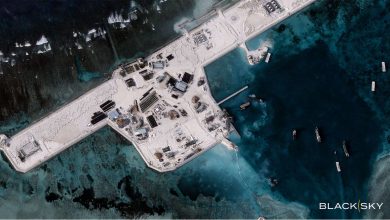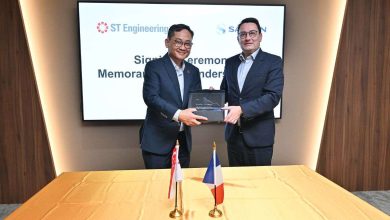
Safran Sets Its Sights on Powering Up with Collins Aerospace’s Flight Systems Division
Safran has revealed plans to acquire Collins Aerospace’s advanced actuation and flight control operations, which are essential for both commercial and military aircraft, as well as helicopters. The enterprise employs roughly 3,700 personnel across eight locations in Europe (France, UK, and Italy) and Asia, benefiting from MRO and engineering expertise. It is anticipated to yield revenues of around $1.5 billion and an EBITDA of $130 million in 2024.
Olivier Andriès, Chief Executive Officer of Safran, stated: “This potential deal signifies an extraordinary chance to enhance our stature in critical actuation and flight control sectors. Our highly compatible product ranges would establish a global frontrunner in these markets, generating around $1.8 billion in sales. The acquisition would empower us to provide a thorough offering to our customers and strategically position us for next-generation platforms as these sectors transition towards increased electrification. This business aligns perfectly with our product lineup and corporate ethos, featuring leading-edge technologies, recurring aftermarket revenues, and sustainable growth.”
The acquisition is projected to create approximately $50 million in annual pre-tax run-rate cost synergies, which would be systematically integrated from 2025 to 2028. Such synergies will predominantly arise from economies of scale in procurement, complementary R&D, as well as internalization of sourcing and manufacturing flows. Additionally, commercial synergies would be realized through integrated offerings and a diversified customer and geographic mix. These commercial benefits are expected to extend beyond 2028, with run-rate achieved on next-generation aircraft by the middle of the following decade.
The enterprise value of $1.8 billion would indicate a multiple of roughly 14x pre-cost synergies and around 10x post-run-rate cost synergies based on 2024 EBITDA, with an anticipated IRR and ROCE for 2028 exceeding the Group’s WACC and positively impacting Safran’s earnings per share from the first year. As part of the planned acquisition, long-term supply contracts (covering about 25% of sales) would be established between Safran and Collins under favorable conditions. The transaction is expected to be completely financed through available cash, minimally affecting the Group’s net leverage and reaffirming the commitment to maintain the Group’s solid investment-grade rating.
Essential strategic advantages of this acquisition for Safran encompass:
- Exceptionally complementary product offerings forming a leading contender (approximately $1.8 billion collective sales in 2024) with a comprehensive product portfolio – Collins’ actuation and flight control sector would equip Safran with an extensive array of capabilities and products, allowing the Group to evolve into a leading integrated player with a complete actuation and flight control product range;
- Synergistic exposure across commercial, military aircraft, and helicopter sectors, featuring robust legacy programs – These new capabilities would provide Safran with a well-rounded exposure to varied customer segments and product categories while securing strong positions on both mature and growth platforms
- Complementary strengths in hydraulic and electromechanical actuation positioning Safran advantageously for advanced aircraft – Collins’ top-tier hydraulic and mechanical actuation technologies would merge seamlessly with Safran’s existing expertise in electrical actuation and electronics, optimally positioning the Group for future aircraft initiatives;
- Attractive exposure to lucrative and recurring aftermarket revenue streams – Approximately 40% of the acquired revenues originate from aftermarket sources, enabling Safran to boost its presence in this highly advantageous revenue channel;
- Strong potential for value creation, supported by short to medium-term cost synergy opportunities – Clearly identified avenues for cost synergies, with additional potential from commercial synergies
The potential transaction is contingent upon the information and consultation process with the relevant employee representation bodies of Collins and Safran, in addition to customary regulatory approvals and closing conditions. Closure is expected to occur in the second half of 2024.







